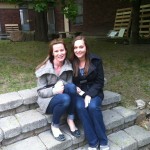Resources Used
Natural Curiosity: Environmental Inquiry (OISE)
This is a fantastic resource for outdoor learning.
We have copies of this book in our kindergarten classrooms. See the link for the book free online (180 pages, 50 mb download).
The book focuses on environmental inquiry and how we can use the outdoor environment and community to inspire inquiries both inside and outside of the classroom. It includes great practical examples of what this can look like as well as personal stories from people using environmental inquiry from kindergarten to junior years.
http://www.naturalcuriosity.ca/pdf/NaturalCuriosityManual.pdf
Connecting Young Children with Nature – NAEYC
This is a quick article explaining why it is important for children to have exposure to nature. It describes some ways we can bring in items from the outdoors to explore.
http://www.naeyc.org/tyc/article/connecting-young-children-with-nature
Connecting with Nature: An Educational Guide for Kindergarten (David Suzuki)
This is a fantastic resource created by David Suzuki. He argues that we need to give children more time to play outdoors. He gives practical outdoor activity ideas. He models an outdoor activity, how to get the students to reflect on the activity, and how to take it further (four lesson ideas). Suzuki also gives an activity idea that brings music and art outside!
http://www.davidsuzuki.org/what-you-can-do/downloads/CWN_TeachersGuideKindergarten.pdf
Ontario Eco Schools
This website provides some great outdoor full-day kindergarten learning resources. They have provided three lessons that we can do with students outside (an art lesson, nature walk discussing living and non-living, and a nature scavenger hunt.) They have given examples of how to spark inquiries and how to bring critical thinking and literacy outdoors.
They also have some interesting videos of what an ecoschool looks like.
http://www.ontarioecoschools.org/news/full-day-kindergarten-learning/
Ottawa Nature Collaborative
You can follow this community page on Facebook. They post items and pictures every day relating to children, nature and ways to set up the environment. It provides fantastic resources that you can use with your class outside.
Forest School: Enhancing Nature
The Forest School Canada website provides many great resources for outdoor education. Browse the website to see some great ideas.
They produced a guide to inquiry-based outdoor education which can be found at the link below. It discusses forest schools in detail but also gives ideas of how children can be in nature.
http://www.forestschoolcanada.ca/wp-content/themes/wlf/images/FSC-Guide_web.pdf
Let the Children Play
This blog is written by an ECE. It is great to follow to get ideas for play-based learning. There is a huge focus on outdoor inquiry play activities and materials.
Active for Life
This website is geared towards parents but can also be useful for educators. It has many articles on physical literacy and ways to get children moving. It has a huge section on physical activities you can do outside with children along with the corresponding skills that you are working on.
CHILDREN’S BOOKS (A few children’s books that may be interesting to read when learning in the courtyard)
A Fruit is a Suitcase for Seeds – Jean Richards
Compost Stew – Mary McKenna Siddals
Mortimer’s First Garden – Karma Wilson
Mud Pies and Other Recipes – Marjorie Winslow
Planting a Rainbow – Lois Ehlert
Our Community Garden – Barbara Pollak
The Curious Garden – Peter Brown
The Tiny Seed – Eric Carle
BOOKS
Last Child in the Woods: Saving our Children from Nature-Deficit Disorder – Richard Louv
This is a great book to guide thinking about children and the outdoors. It discusses the nature deficit of the children in this wired generation. Louv related this to the increase in obesity and different disorders. He discusses why the outdoors is healthy for children and gives ideas for how we can get children back in nature.
No Fear: Growing Up in a Risk Averse Society – Tim Gill
This book discusses the society today that shields children from risk in their lives. It argues that this can be detrimental to child development. It discusses the need for a better balance between protecting children from threats and giving them an opportunity to have more freedom and learn from mistakes. An interesting read to challenge thinking.
https://timrgill.files.wordpress.com/2010/10/no-fear-19-12-07.pdf
How to Raise a Wild Child: The Art and Science of Falling in Love with Nature – Scott D. Sampson
This book discusses why it is important to get our children outside. It guides adults in how to connect children with nature. It includes activities you can use to engage students in the outdoors and gives ideas of how to use technology to help with this. The book addresses many different age groups.
Resources Created
These resources will open in your browser in a new tab, or be downloaded to your computer.


